VisionX 420D Review: ASRock's mini-PC Lineup Continues to Impress
by Ganesh T S on September 1, 2014 9:00 AM ESTGaming Benchmarks
The two recent mini-PCs that we reviewed with gaming potential have both been based on Intel's Iris Pro. The Gigabyte BRIX Pro has a much smaller footprint, while the Zotac ZBOX EI750 and the VisionX 420D are more comparable. When the VisionX 420D was officially launched, AMD's official model number for the Venus GPU targeting the mobile market was the Radeon HD 8850. In their rebranding exercise, it became the R9 270MX. The MXM card also integrates 1 GB of GDDR5 VRAM. For the purpose of benchmarking, we chose five different games (Company of Heroes 2, Sleeping Dogs, Tomb Raider, Bioshock Infinite and DiRT Showdown) at three different quality levels.
As someone focusing on HTPCs and multimedia aspects, I rarely get to process gaming benchmarks, even while evaluating GPUs. One of the aspects that I feared was spending lot of time in installing the same games again and again on different PCs under the review scanner. The solution was to go the Steam route. Unfortunately, Steam also likes to keep the game files updated. A quick online search revealed that Steam could make use of an external drive for storing the game executables and downloadable content. With the Steam drive on-the-go use-case being read-heavy, the Corsair Flash Voyager GS USB 3.0 128GB Flash Drive (with read speeds of up to 275 MBps) was ideal for use as a portable Steam drive.
Even before we jump into the benchmark numbers, readers must be thinking about the VisionX 420D handily besting the Intel Iris Pro-based PCs. AMD doesn't disappoint, as shown in the graphs below. For comparison purposes, we also have results from the ASRock Vision 3D 252B, a two-generation old gaming mini-PC that used the NVIDIA GT 540M.
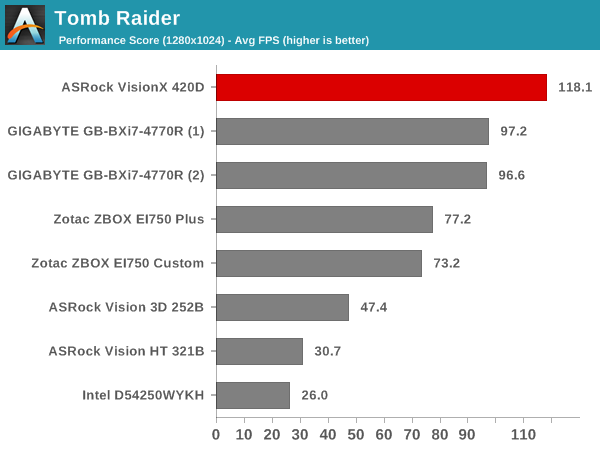
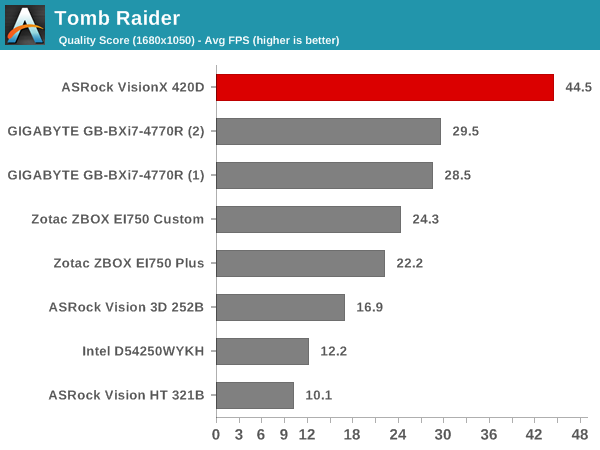
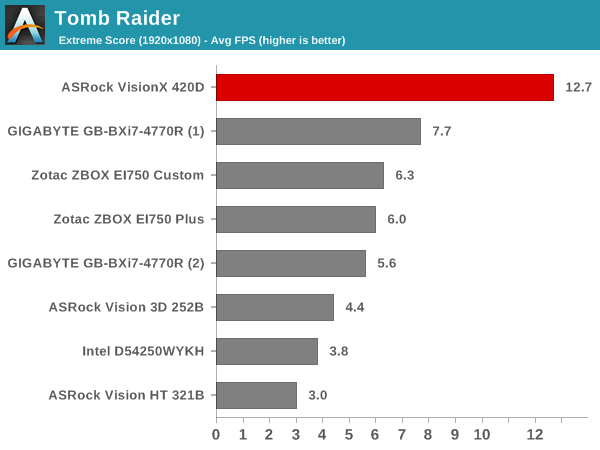
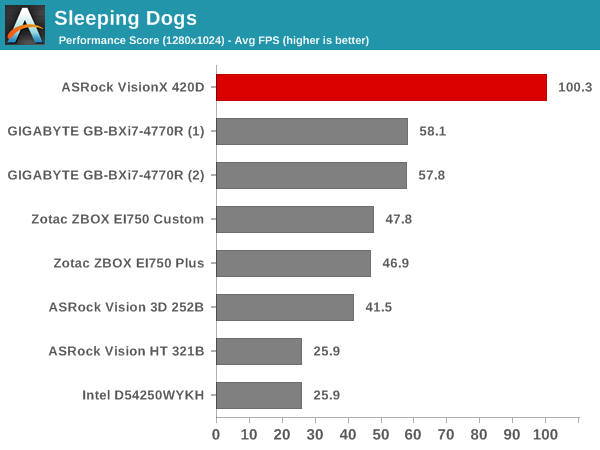
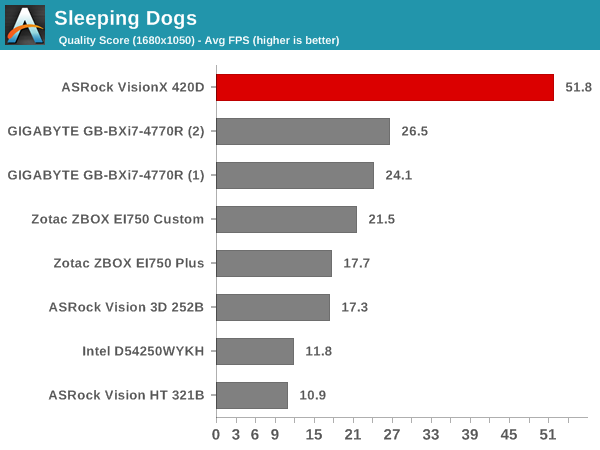

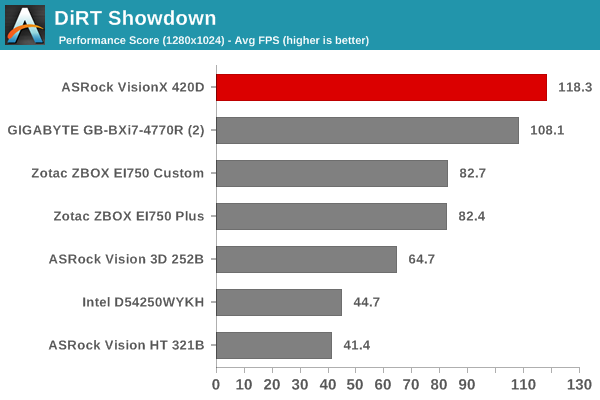
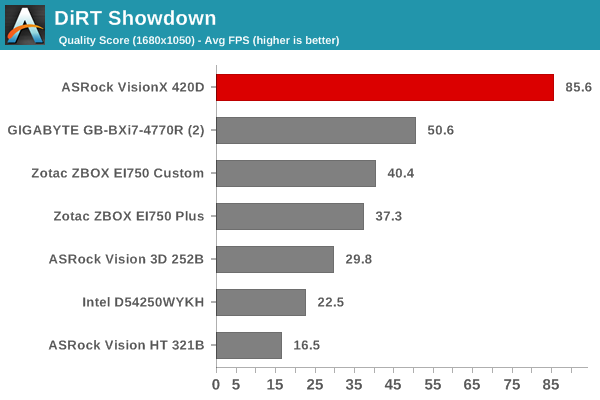
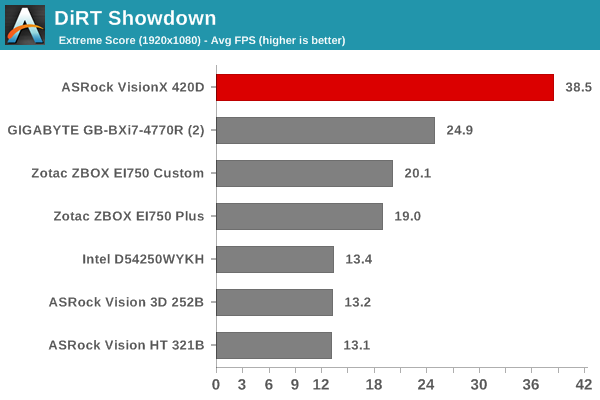
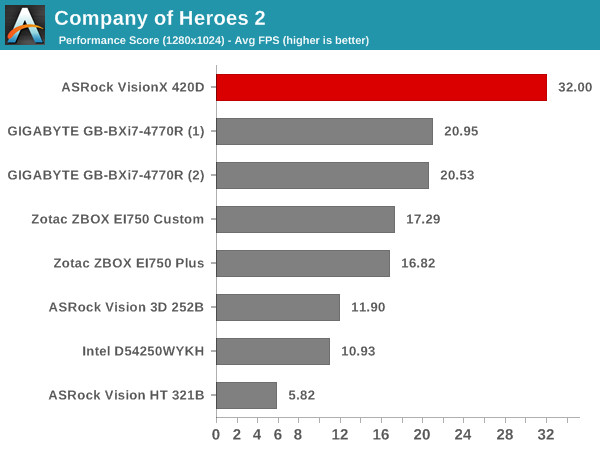
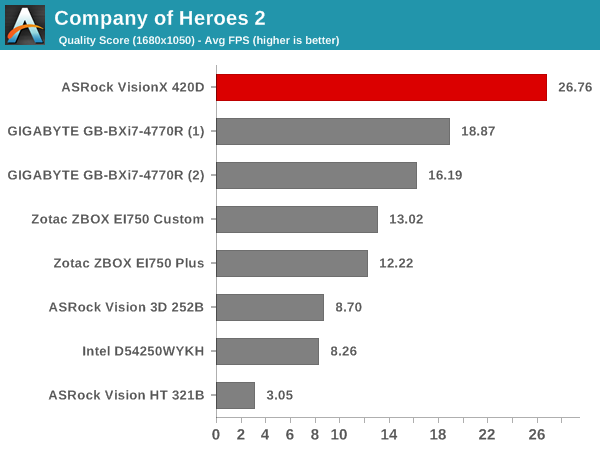
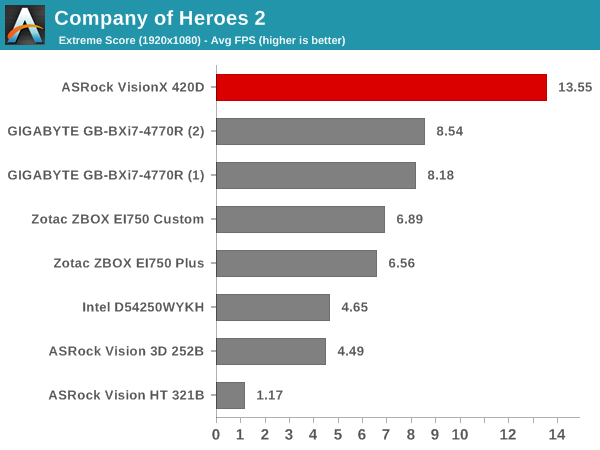
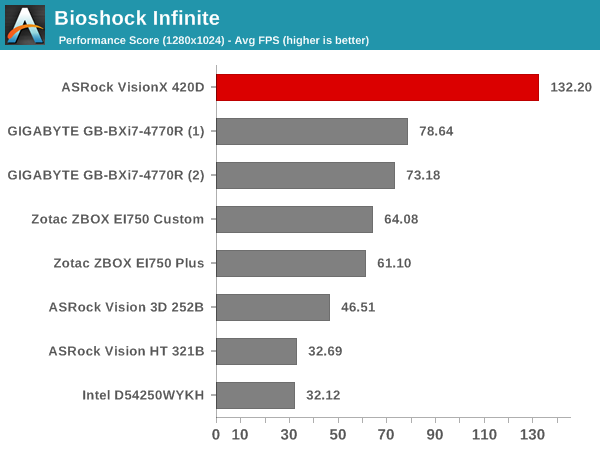
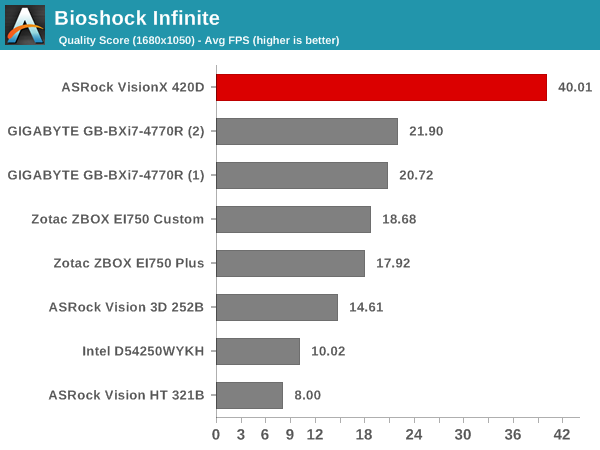
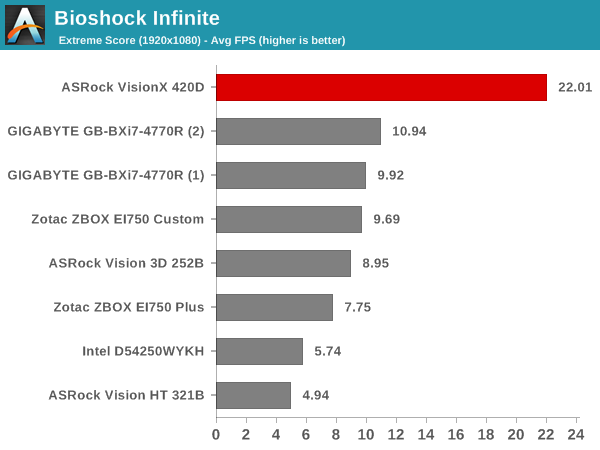
Before concluding this section, I would like to draw attention to the improvement in gaming credentials over the last two years inside the same chassis with a similar thermal headroom. This has really expanded the available target market for gaming mini-PCs such as the one being considered today. Gigabyte does have the BRIX Gaming version (which comes in a smaller chassis with a 'desktop-class' NVIDIA 'GTX 760'). We will see next week whether it can give the ASRock VisionX 420D a run for its money in the gaming department.










30 Comments
View All Comments
Gigaplex - Monday, September 1, 2014 - link
You could write a small paragraph commenting on the relative performance. For example, in Office suite benchmarks make a comment whether it's likely the CPU or storage that's holding it back. Right now it's just a bunch of charts with little commentary.creed3020 - Wednesday, September 3, 2014 - link
I would have to agree. Charts without commentary provides the reader little to no analysis. I'm not saying that we're all stupid on this end to spot obvious charts but take this an opportunity to really let the review shine and stand above the rest of the crowd. Running benchmarks and posting charts is something any tech website any do...yannigr2 - Tuesday, September 2, 2014 - link
In a way you are already doing what I am suggesting in the Agisoft Photoscan graphs where you have two bars for each machine and you specifically mark those that also use the gpu. Giving the gpu info in the gaming benchmarks(for example Habey ... (HD 4000)) and the cpu in metrics (for example Habey ... (i7-3720QM) ) will make the review graphs easier to read. Also a big difference between two mini PCs with the same GPU or CPU could make a few readers more curious about the results and force them to find out about that influence of the memory or the storage subsystem that you have noticed but most of as ignore.Now the easiest way to read this review is to keep two pages open, one in the first page and the second with the print view of the article. But going all the time from one page to the other is a little more work for the reader than usually (we are really lazy, believe me).
Anyway, too much and good work in this article. Thanks for answering my post.
omgyeti - Monday, September 1, 2014 - link
Awesome article. I love reviews of small footprint/HTPC systems.I'm sure with all of the press surrounding the upcoming Alienware Alpha that you are more than likely to have a review for that in the coming months, but in the meantime if you guys get your hands on a Zotac EN760(which is similar internally to the Alpha) for review that would be awesome to see stacked up against this thing.
isa - Monday, September 1, 2014 - link
Thanks for a great review - I especially like the objective, candid and insightful "concluding remarks" in this and other Anandtech reviews.Suggestion for a future HTPC review - JRiver recently started selling their own HTPC called the "Id", based on an OEM NUC design. I think it would be good to review not only for its hardware and software merits, but also because JRiver seems to be really thinking out high performance, cost-effective ways to manage and distribute home audio and video that other companies either ignore or charge thousands for. With the disappearance of the Squeezebox Touch and disappointing audio performance of RPi, JRiver seems to have the best end-to-end vision and implementation of really good, affordable home media solutions. Just my humble opinion, but interested in what Anandtech thinks about the best solutions that consider HTPCs, NASs, networks and renderers for home entertainment.
tuxRoller - Monday, September 1, 2014 - link
I've mentioned this before but I looked into building a mac mini "clone" awhile back using this same case. The problem I ran into was the power supply: I didn't want a brick.Why, why, why, would an oem build this system with a power brick? I can do that. What I can't do is find a power supply that will fit in the case.
scineram - Monday, September 1, 2014 - link
Get a case with a PSU, like the Chieftec FI-01B-U3 or LC Power 1370BII. A bit bigger than these HTPCs, but so is the Mac.tuxRoller - Monday, September 1, 2014 - link
The macmini used this exact case, iirc.Thanks for the suggestions, though! I'm always on the lookout for new, small cases.
know of fence - Monday, September 1, 2014 - link
Is there any way for the consumer to get hold of one of these motherboards or kits that support those magical S0ix sleep states without opting for these insufferably noisy and pointless mini-box solutions?I don't want to pimp my ride with one of these or the backside of a monitor, I just want a PC that consumes little idle power, that lets me attach a large silent heat sink.
Perhaps as mini-ITX with a DC in. ASRock makes DC-powered boards for BayTrail, but why not Haswell?
funtasticguy - Monday, September 1, 2014 - link
I've had my Vision 420D since May and it has been a dream portable gaming/XBMC machine. I was able to install two 2TB hard drives and a 250GB mSATA drive. I was even able to upgrade the CPU chip to an i7-4702MQ without much trouble. The heat temperatures of the CPU are rather outstanding when compared to the Brix Pro which can go as high as 100C when gaming versus 82C for the VisionX. My Steam games and high end emulators run extremely well at 1080P without overheating or throttling. It is also not noisy at all. In addition, XBMC runs like a dream on this machine. I loved the fact too that I was able to take this with us during our family summer vacation trips. We had portable gaming and XBMC on our trips. ASRock definitely hit a home run with this model and we just love it!